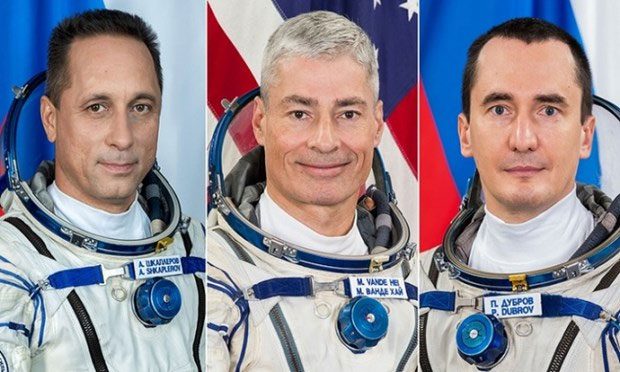This return to Earth by the astronauts garnered more attention due to the escalating tensions between the United States and Russia following Moscow’s deployment of a special military operation in Ukraine last month.

The crew on the Soyuz spacecraft includes Anton Shkaplerov, Mark Vande Hei, and Pyotr Dubrov (from left to right). (Photo: NASA)
On March 30, American astronaut Mark Vande Hei returned to Earth with his two Russian colleagues Anton Shkaplerov and Pyotr Dubrov from the International Space Station (ISS) aboard the Russian Soyuz MS-19 spacecraft.
The Russian space agency, Roscosmos, reported that the landing capsule of the Soyuz MS-19 spacecraft carrying the astronauts successfully landed in Kazakhstan. Mark Vande Hei set a record for the longest flight by a NASA astronaut on the ISS, totaling 355 days.
Both astronauts Dubrov and Vande Hei arrived at the ISS on April 9, 2021, aboard the Soyuz MS-18 spacecraft. They completed a total of 5,680 orbits, traveling over 240 million kilometers around the Earth. Meanwhile, astronaut Shkaplerov arrived at the space station in October 2021 with a director and a Russian actress, tasked with filming the first movie in space.
While the film crew returned to Earth just weeks after going to space, astronaut Shkaplerov remained on the ISS, concluding his fourth space mission with a total of 708 days in orbit.
This return to Earth by the astronauts attracted more attention due to the escalating tensions between the United States and Russia following Moscow’s deployment of a special military operation in Ukraine last month.
Despite NASA repeatedly reaffirming its commitment to continue close cooperation with Roscosmos, some American media outlets expressed doubts about whether Russia would return astronaut Mark Vande Hei to Earth amidst Washington’s imposition of sanctions against Moscow.


















































